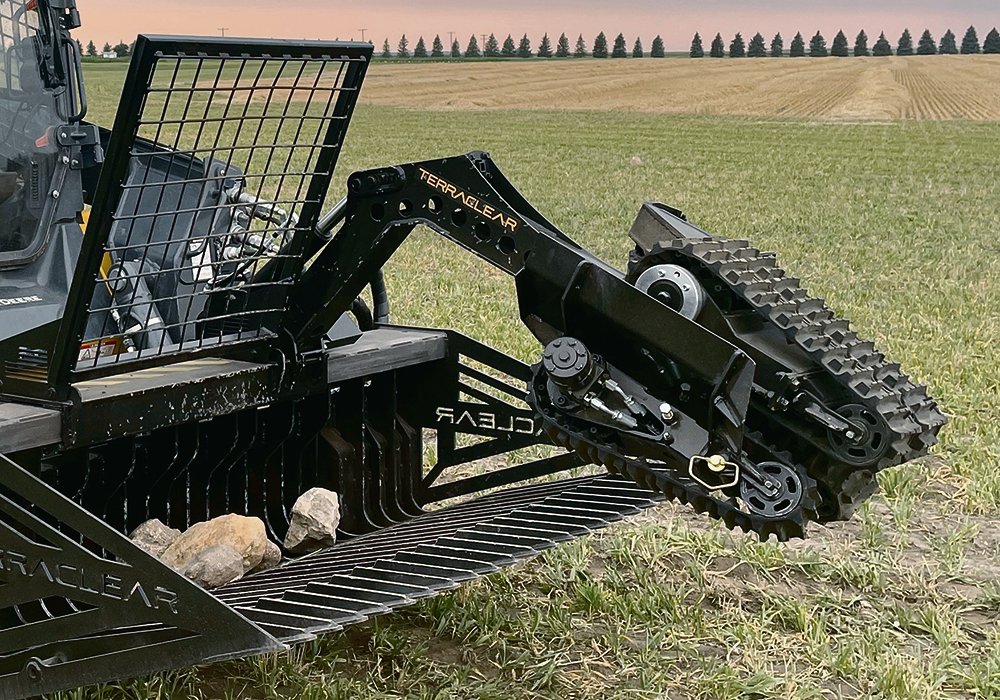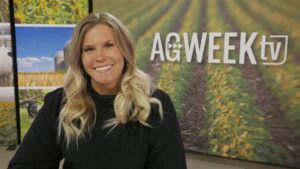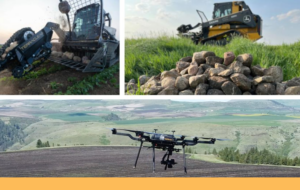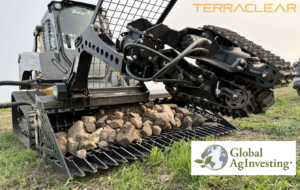Whether it’s a drone in the air, a soil sampler in the field or picking tools of all sorts it’s a service
Agricultural robots have opened the door for more farm operations to be contracted out to service companies.
The pace of new robotic-based agricultural platforms being developed and tested on North American fields is accelerating, and many of these companies are targeting a service model for their business plan.
Traditional ag retailers plan to get a piece of this robotic action.
A precision dealer survey by Purdue University that was published this summer found dealers see a big promise for UAVs in the future, both for data gathering and for applications.
In 2021, 14 percent of dealers in the United States offered a service that uses a drone to apply crop inputs, but by 2024, 29 percent of respondents expect to offer this service.
“We’re seeing in the future that dealers are really interested in using UAVs not only for scouting fields and taking imagery, but also to apply fungicides, insecticides and herbicides,” said Bruce Erickson of Purdue University, who led the dealer survey.
In Canada, the use of drones to collect imagery on farms continues to increase, and it’s only a matter of time until the Pest Management Regulatory Agency allows some crop protection products to be applied with a drone.
The precision dealer survey also found that by 2024, 16 percent of U.S. dealers expect to offer a robotic crop scouting service, while 13 percent of survey respondents plan to offer robotic weeding.
Raven’s OMNiPOWER robot is already covering Canadian acres.
Its ability to be fit with multiple implements, including a New Leader spin spreader, Pattison’s Connect Coulter toolbar for liquid fertilizer applications and a 120-foot Connect sprayer, may make it an attractive option for a service company.
There are also multiple start-up service companies that use artificial intelligence on robotic-based platforms to locate and eliminate weeds, including Carbon Robotic’s 9,000-pound autonomous robot that uses a 72-horsepower Cummins diesel engine to power weed-blasting lasers, and the FarmWise Titan FT35 that mechanically eliminates weeds.
Both companies foresee these robots will be used by service companies that will take over weed management on large horticulture farms.
A skid steer-based robotic platform has been developed by Rogo Ag to enhance its soil sampling service.
The SmartCore robot takes soil samples and labels them for subsequent laboratory analysis.
Drew Schumacher of Rogo Ag said operators unload the Bobcat from a trailer and hit go and it collects and packages the soil and then returns to the edge of the field.
SmartCore robots are already out soil-testing U.S. fields, but they are only available as a service and are not available for purchase by farmers.
There are some agricultural robots being developed that will be for sale for anyone to buy, but the developers foresee them being used by smaller service companies outside of the traditional ag retailers.
For instance, the robotic bale mover being developed by Vermeer uses a track system to pick up to three bales and then move them to a set location such as the edge of the field.
“The machine knows exactly where the bale is, so it knows when to turn those tracks on. It’ll drive up to the bale and it won’t turn the track on until it’s right where it needs to be, and when the ground drive is helping move the bale up,” said Kent Thompson, forage innovations engineering manager at Vermeer.
A user interface is used to create field boundaries and operators also input where to create the bale stacks.
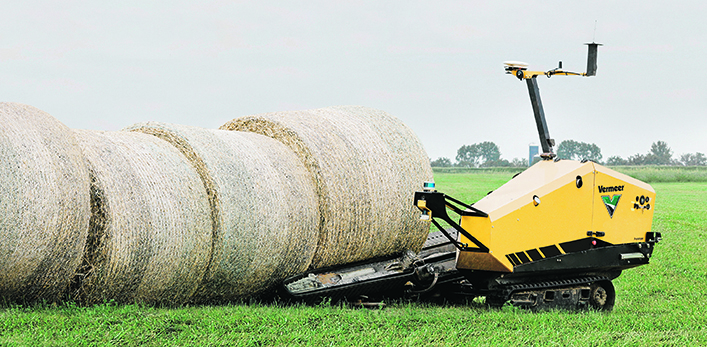
“It will automatically calculate what we call a scour pattern, a kind of a back-and-forth pattern to make sure we see the entire field or cover the entire field. It’s based on the field of view of the sensors,” Thompson said.
Similar to custom baling operations, Thompson said there may be an opportunity for business to use this robotic bale mover in a custom business.
“The intent is to continually pick up throughout the day and night. The productivity we get is based on longer time duration, because we don’t need a person out there running it,” Thompson said.
The robotic bale mover does not require any pre-pass data similar to a robotic rock picker being developed by TerraClear, which uses drones to locate the rocks.
The software developed by TerraClear can use data from any drone system with enhanced imagery capability.
“Anybody can collect imagery on their field at high resolution, and we can talk to farmers or service providers on those details. We can process that information and provide a rock map,” said Trevor Thompson, president of TerraClear.
TerraClear also developed and sells a bucket with two opposing tracks on a hydraulic arm that can be installed on a skid steer or compact tractor.
“You get over the rock and push a single button that allows the picker to go down to grab the rock and pull it into the bucket,” Thompson said.
“That top-down approach is really helpful because it allows us to avoid digging through the ground and it allows you to really efficiently grab the rocks and configure effectively in a lot of different conditions.”
The TerraClear automated platform uses the data from the stone-locating software to guide an automated skid steer fit with the TC80 rock picker.
“We’re driving towards a fully autonomous version of that, a Roomba for rocks if you will,” Thompson said
He said the technology TerraClear is developing will enable companies to offer a service to locate and remove rocks, so farmers don’t have to find the labour to do this task during a busy time of year.
Sabanto Ag is one of the most advanced robotic service companies to fit tractors with planters and automation technology.
The company creates planting robots out of multiple kinds of tractors, including a JCB Fastrac 4220, Kubota’s 60 horsepower M5660s and 90 hp M5s, which are small but easy to load and transport.
Sabanto plans to have fleets of robot planters that will follow favourable planting conditions in spring, similar to how custom harvest operations travel across North America in late summer and fall.
A difficulty in finding qualified help is usually stated as the main reason robotic platforms will take over more tasks.
A labour shortage has already hit the transportation sector in a big way, and large shipping companies are investing significant money into automated trucks.
Trucking is another farm task that could soon go to a robotic-based service company, especially considering there are more than a dozen companies developing and testing autonomous trucking in the U.S.
It’s difficult to know what the labour market will look like in a few years, but it could be the case that it’s easier to train and retain staff to run and maintain robotic platforms than it is to train them to bounce across the field in various farm machines.
It may be even cheaper for producers to hire a robotic-based service company to handle more jobs on the farm than it is for them to buy, operate and maintain those robots themselves.
